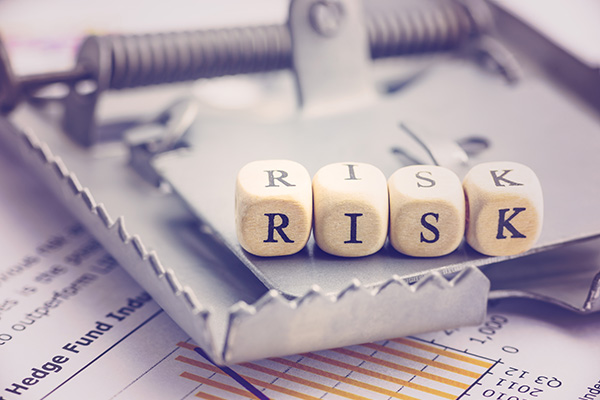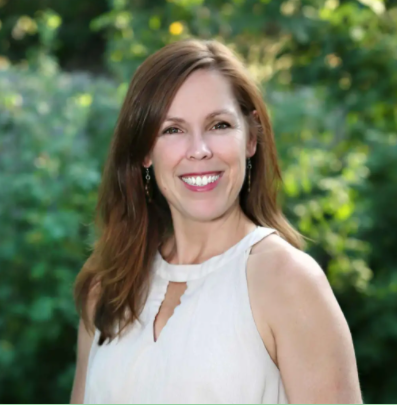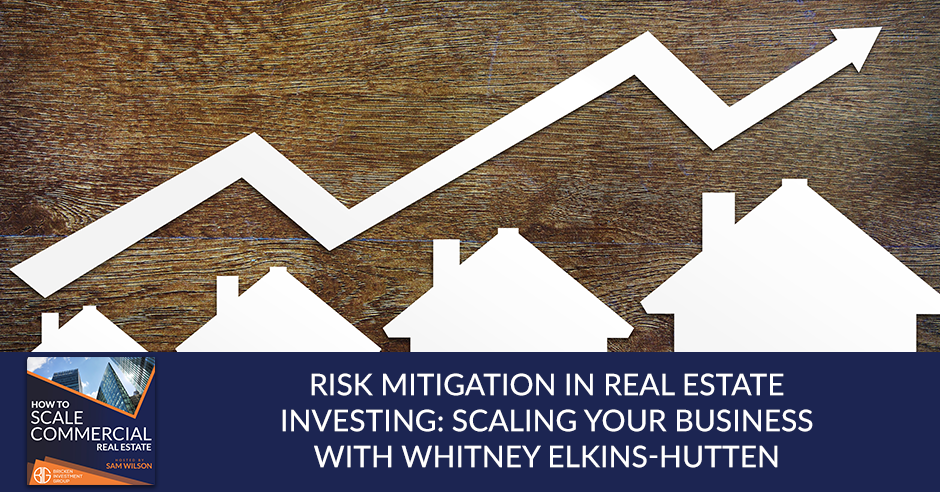Investing in real estate is full of rewards but not without risks. What can you do to minimize or mitigate some of these risks? In this episode, Sam Wilson interviews real estate investor and personal finance trainer Whitney Elkins-Hutten about risks in real estate and scaling your business. Whitney takes a look at how she got into real estate, what she’s learned, and her personal tips on mitigating risk. Tune in for more real estate tips and learn how to scale your business.
—
Listen to the podcast here:
Risk Mitigation In Real Estate Investing: Scaling Your Business With Whitney Elkins-Hutten
Whitney Elkin-Hutten began her real estate career in 2002 and according to her, it was a huge success and it was on her second deal that she almost lost it all. Since that first rental, she’s partnered with over $700 million, where the real estate ranges from 5,000 residential units and more than 1,400 self-storage units across seven states. She’s also a guest on the BiggerPockets Podcast, episode number 340. When she’s not out scouting a new deal or meeting with new clients, you can find her on the trail, running with her dog, mountain biking, camping and spending time with her family.
—
Whitney, welcome to the show.
Thank you so much. It’s such a pleasure to be here.
The please is all mine. The same three questions I ask everybody who comes on the show is where did you start? Where are you now? How did you get there?
I started in 2002 buying a house with a significant other. The relationship fell apart about a month later. I had a house and I didn’t know what to do. Everything was in my name and I was scared. I was young and dumb. I stuffed that house full of roommates. The house required quite a bit of repair because I didn’t think in my right mind that I would be able to keep that house. Fast forward, eleven months later, I got the entire thing repaired.
YouTube didn’t exist back then. I had to buy the Home Depot 1-2-3 books to do all these repairs myself. I sold the house, which was in hindsight probably my number one investing mistake and turned a profit of about $52,000. I realized I had not been paying for any part of that mortgage that whole entire time and moreover, I’ve been putting money in my pocket every month. That’s when it dawned on me like, “This is the best thing since sliced bread.” How many more of these deals could I possibly do?
From there, I scaled up a portfolio. Generally, I live in flipping and house hacking. I did a few more deals that way. My husband joined me a few years later and we realized we were accumulating piles of equity but we hadn’t unlocked these golden handcuffs for ourselves. We realized we needed to transition into buy and hold real estate cashflow so rentals. You head slap late. There’s a reason why people have been buying real estate and renting it out for years.
We scaled up a portfolio of 30 BRRRR, so rehab properties and then we’re still doing some regular flipping on the side, and then we transitioned into multifamily real estate when my husband decided he wanted to have the ability to step away from his job. Here we are now. We’ve focused intently in the past several years on our multifamily real estate. Where am I at now? I’m trying to balance back up the portfolio between a real estate that I have in partnership with and then my direct one.
There’s a lot of things that I always put the caveat quickly in there and you hit that. What was the transition when you said, “We’ve got this single-family. Now we’re going to multifamily?” How did you get your first deal done? What does that look like? Walk us through that process.
You have to be passionate and believe in the product that you’re selling.
I’ll set aside the living in flipping and the house hacking part of the story because that was buying the roof over your head where you are going to live and utilizing the tax codes or taking advantage of the tax code. It’s legal to live in the property for two years, get it repaired and then sell it at a capital gain and not pay taxes on it. That’s one of the easiest glide paths into real estate. It’s powerful. I don’t think people realize how large of a gift that is from the IRS now. I work with investors in my coaching business. They’re all of a sudden like the deer in the headlights process. They forget all about the translatable skills that they have if they’ve already bought a primary property in that. I was no different.
All of a sudden, I’m like, “I’m not living there. What loan do I get? Who’s going to ensure this property? Are they going to pay every month on time? Why would they do that? I don’t understand.” How we got our first property is we bought a property in our own backyard, down the road about ten miles in Broomfield, Colorado. We didn’t know what we didn’t know. I hadn’t stumbled across BiggerPockets. I even read a book about how to analyze a deal property. We had capital and other friends were doing it. We were like, “This looks like a great property. It probably will hold its value. Can you back up the napkin map and probably make $300 or $400 a month?” I didn’t include any CapEx, maintenance and vacancy expenses.
That $400 a month was only profit. The toilet didn’t break or the fence didn’t blow down, which all those things did happen. Now we are locked out. We had some amazing tenants. We had not ignored the number one rule of real estate, which is location. I had already violated that rule before with the previous flip. That much I knew. I had checked that box but when it came to analyzing the numbers, it was an epic fail. We closed on that property at the end of January. I stumbled across BiggerPockets the next month, maybe two weeks later. I joined one of their classes on how to analyze a deal and I went, “Crap.” I’m like cashflow. I think it was 1.8%.
Is it annually or monthly?
Annually. It was 1.8% monthly. I would have been amazed.
It sounds good to me. It’s almost 2% a month.
My cash-on-cash return annually was 1.8%. After I’d taken the account for all the expenses related to the property, I went, “I’m doing better than having my money sitting in a bank.” That doesn’t take into account that any depreciation losses I was getting on the property or anything like that. That’s where I quickly transitioned into learning how to invest out of state because, at the same time, we were trying to buy another property here in Colorado.
I’m like, “It takes $80,000 at that point in time to get into a property and get it off the ground. I want to have two properties. Each cashflowing 1.8% a month. That path to financial freedom is going to be so long. I need to find a different way.” I learned how to underwrite properties properly and research markets. By that following April, I had two properties out of state.

These were both in the single-family space.
One in Indianapolis and one in Kansas City and by the end of that year, I had ten properties out of state.
When did you transition to multifamily?
Two years after that, we are in that interim. I had learned about the BRRRR, like how you buy a property below value, rehab it, tenant it and refinance your money out. Recycle this in capital over again because we didn’t have endless supplies of capital so we had to get crafty. We scaled it to about 30 units and that took about another year and a half after that then I went to my husband and said, “Look what I’ve done. Isn’t this amazing? I would love to spend more time with our daughter at home.” She was little and that’s where I wanted to focus, being with my family. He said, “I want some of that.” I’m like, “We did not include that into our plan.” I had slack. I’m going like this. I’m like, “Why didn’t we plan for both of us to step away from our jobs?” At that time, he said he didn’t want to.
At that point in time, I was celebrating because I’m like, “He’s coming to the dark side. He sees the power of real estate.” My heart sinks because I’m like, “I have to do probably at least another 40 or 50 more of these properties to get him out of his job because he had all the benefits attached to his job.” I’m like, “I don’t know if I’ve got it in me to do another 50 BRRRR type properties at the same clip that I had been doing them at. That’s when I was like, “We got to figure out scaling business. How do you scale? How do you add more doors?” I had been in retail until that point in time, I’m like, “We have to find a pot of money. We had to be able to close more doors with one transaction.” That’s where we transitioned into multifamily real estate.
That’s a great feeling when I can step away. This is not working the way it should. I’m sorry it wasn’t met with enthusiasm, maybe that you were hoping for like, “We got to do this again.” How did you find your first multifamily deal? How did you fund it? What were some challenges you ran into and then how did you grow that portfolio?
I skipped buying the whole multifamily property myself. I had done a duplex, triplex and quad. For me, that’s more residential real estate but it technically falls in that multifamily realm but I hadn’t had been pushed to go find a 6, 10, 20, 30 unit on my own. At this point in time, you’re scaling. All your systems are breaking down. I need a new dealer, a new lender, a new market and a new way of analyzing the deal. Some of my skills translated but I had to re-engineer everything. I had also invested in my IRA passively in a couple of multifamily deals where I was a limited partner. The whole time I’m sitting here comparing what I could find in the market and acquire myself versus the returns I was getting in my IRA and paying attention to how they were running that business.
I’m like, “I’m not beating the market.” That’s when it dawned on me that those people who have success in multifamily real estate have a partner. That’s what I focused on next was trying to find partners to go into business with and that’s where you and I met is when I was working with Goodegg Investments. I joined Goodegg Investments as their first team member and their Director of Investor Relations and Operations. I scaled up my portfolio of passive investments through Goodegg Investments and did some active deals on the side as well.
We participated in deals together, which has been awesome and I have enjoyed that. You got to come in with Goodegg and participate, not only as a limited partner but as a general partner on these deals as well. That’s a great way to scale. Talk to us about that method or that approach versus going out and being the sponsor of the deal yourself out of the gate.
The number one biggest mistake in real estate investing is inaction.
This has been my whole life. Anytime I want to make a pivot within my career or learn a new skill, I am first trying to understand how I can get paid to learn. It’s not much like how can I make money because there’s an exchange of value there. I knew I had a skill that they needed. I had come from an operational and business background. That’s valuable to a business. It’s an exchange of value that we created together.
Now walk me through that process because I’ve had Annie Dickerson on the show. The process with Goodegg came in the front end. I know things have changed but as capital raisers with other sponsors, correct?
Not direct capital raisers but a hybrid model.
What were some key things that you picked up as you went through that process? You said, “I liked this and that’s something that other people should implement.”
What the business needed was somebody to play catch to all the different operational pieces of the business. One of the strengths I brought to the business is coming from a sales background. When I was in public health or working in a community pharmacy, I had to convince people to make behavior changes that they did not want to make. I don’t care how you slice it but that’s a sales job. This is something I don’t talk about in-depth on a lot of shows but one of my first public health jobs was trying to educate commercial sex workers on condom negotiation. There’s nothing much harder than that. They were maybe working with an addict and trying to help them use a clean needle. I succeeded there and I’m like, “I can sell ice to an Eskimo.” You have to be passionate and believe in the product that you’re selling.
I had already come in knowing about the power of real estate. I felt this was more about how can I connect with as many people as possible and educate them about the power of real estate. If you choose not to do it actively yourself, how can you get involved in another person’s deal passively and create an immense amount of leverage in your life? It’s by investing in an operating business or credible known operator that has a track record and has the skills in place that they have the credit, network, team and other investor money coming in to access the deal. That is the main difference for me. You could ask the question like, “Why didn’t I focus more on doing it myself?”
I didn’t have an investing network. I have the knowledge. There’s power in plugging people into an already and existing network if they can. Now certainly, once you learn those skills, it’s probably tempting to go out and strike out on your own and I know a lot of people do. I think that helps clear their hurdle because 1) You’re getting paid for the education. 2) You’re providing an immense amount of value exchange there and 3) You’re building your own personal network at the same time. Setting you up for better success if you do want to strike out into it on your own at a future date.
What was your role at Goodegg?
I was the Director of Investor Relations and Operations. With a title like that, it generally split into two different jobs. I’m the catch-all to the entire business but over time, the majority of my role focused on the investor experience like how did they get into the ecosystem of Goodegg and then how do we develop that relationship in order for them to feel comfortable in investing their hard-earned money? Up until this point in time, the majority of these investors are trading time for dollars. It might be leverage. Maybe they have their own business but I would say the majority of the investors that I encountered were high-income earners and possibly even self-employed.

You’re talking about The Cashflow Quadrant, Robert Kiyosaki’s work. They’re still on the active side of the income quadrant, the E and S. How can I educate them that this investing in syndication is a powerful investment relatively risk mitigated? How does the company I work with risk mitigate that and, at the end, how are we shifting their income to the B and the I side of the quadrant?
That’s an interesting discussion because for a lot of us when we raise capital, we speak with people who already know about this business. Probably 9 out of the 10 people that I have investor calls with is a new investor. At least someone already has an understanding of what’s going on but you were starting with people that have no knowledge at all.
If you take 100 people, 20% aren’t going to engage with you at all. Another 20% already know and they know, love and trust you. They’re already in, they bought and you don’t have to explain anything to them. It’s that middle 60% that has some level of knowledge. If I’m talking about the investor, how do I make sure that they are comfortable with Goodegg in that role that I was in but with anybody? How do you make sure they’re comfortable with your business? The flip side is if you are the one doing the capital raising, you have to risk-mitigate your investment and make sure that the investor knows the risks involved in the investment.
It’s not having a conversation like, “What do you do? How much money do you make? How much do you want to invest? Great. Do you have any questions?” I passively invest myself. Even now, I’ve had those conversations and I get off the phone, and I’m like, “They don’t know anything about me. I could be a terror to work with. They haven’t even sussed that out.” That is something that an operator gets on the phone with an investor.
They need to understand where does that investor’s side is. Follow that educational continuum and help them figure out the resources so they don’t need a handful and they definitely have resources to help them fill in the gap. This mitigates their own business as well. You get a temperature check and a personality check on it. Is this person going to make a good partner? Even though they’re limited partners, are they going to make a good partner because you’re going to be in business with them for 5, 7, 10 years?
What were some things maybe that would give you pause when an investor came to you and you said, “Maybe this isn’t a good fit for us.”
On an initial level, the interaction you have with somebody like, “What gut feeling do you get from them? Did they seem personable? Are they somebody that you can get along with?” That has varying degrees in and of itself. I don’t need somebody when I’m conducting an investor relations call. It doesn’t have to be all roses but are they treating me kindly and politely? Are they respectful? Those are the things that I look for with a limited partner. After that, I would challenge myself like what questions are they asking? I think the questions are going to clue you into their level of knowledge and expertise.
Now I’ve always invited questions. There are no dumb questions. I want to know if you have any and let’s get them solved now because the investors were less of a risk to the investment for me if they have all their questions. I’ve had investors that have closed on a deal, come back and then all of a sudden, they have a laundry list of tax questions and legal entity questions. I’m not giving out tax or legal advice. These all should have been asked upfront. How did we get this far and then now, these questions are out on the table? If that does occur, I’m trying to fill in those gaps as quickly as possible.
On the investor relations side, I’m sure as you received that feedback you go, “Maybe this is something we need to put out some more information on.”
I make it part of the investment process, investment deck and ask that in our investment calls or bring in more experts to talk about these topics and put that information out.
Being empowered to take charge of your finances earlier is probably one of the best gifts that we can give the next generation.
How did you do that? How did you bring in more experts in the onboarding of the investor process?
There’s a couple of different things. Both of them are going to seem fairly direct and simple. 1) Putting in the investor’s hands a resource document that if you have questions about taxes, here are some people that we suggest talking to and giving more than one option because if you give one option, it’s a recommendation. I come from public health. The R-word is illegal for me to say as a public health worker. I can not say recommendation. I can say my suggestion. Here’s some advice but the R-word is reserved for somebody who has a PhD or doctorate. That’s the world that I come from. Make sure that you’ve put together a resource document for that investor to engage in and maybe put it in front of them more than one time.
2) Another thing that I enjoy doing is I would conduct a weekly webinar. There would be an educational topic involved there but also I would stay around to answer Q&A. Sometimes, in those webinars, I would bring on one of my favorite people to work with in my resource document to talk about all these questions that we’ve been accumulating over time. Those types of expert session webinars were highly valuable. It boosts the level of the operator’s know, love and trust factor but you get that investor to yes faster.
Ultimately getting yes is not the end-all-be-all necessarily. Maybe sometimes getting them to no. Fast forward now to where you are not. That was what you did with Goodegg, which was an awesome experience that built the launchpad for where you are and where you’re going next. What does that look like?
I’ve always had coaching and consulting practice in helping investors acquire their first couple of properties and scale up to 20 to 30 units. I shouldn’t call it a side project but I’ve been working in that business for several years now. I’m continuing to enjoy that work. Now my daughter is still at home from COVID doing homeschooling from home so I’m a parent, wife and mom. I’m focused on those areas and then expanding my own portfolio.
That is something that can be a challenge for investors and why investing as a limited partner can be attractive is that I need to grow my own portfolio and it was challenging for me, even working within the business to find the different types of investments that I wanted to invest in. I’m super heavy into real estate and multifamily real estate. How can I diversify my portfolio into other non-correlated real estate assets? My eyes have been opened up to passive investing beyond real estate if you can imagine that.
Before we jump into the final four questions, is there anything else on your journey that you’d love to share with our investors that you might think would be beneficial to someone who is looking to scale their portfolio?
As I work with investors, the number one thing is analysis paralysis. People stay in the data-gathering stage so long that they forget that they have to take massive action. If you don’t take action, you don’t have any progress. Make sure that you are setting a timetable on yourself in order to take action, whatever that action looks like. We’re good about holding appointments for other people, attending work meetings and meeting those deadlines. Set that type of thing for yourself. You have a business. Treat it as such. Your investing is a business.
The final four questions for you are this. If I gave you $20,000 to invest in real estate with no previous real estate investing experience, what would you do with it and why?
$20,000 is a challenge. What do you get started with? You have to invest in yourself first and your knowledge. Do you have to spend $10,000 on working with a guru? No. I think there’s a time and place for that but you have to start somewhere. Get involved in a mastermind group, read some books, attend meetings or attend a conference. Conferences, in the beginning, are great crash courses to highlight some skills that you might need. Get introduced to the mindsets that you might need but network. You’re going to need mindset skills and networks to succeed.
The second question for you is this. If you could help our readers avoid one mistake in real estate, what would it be and how would you avoid it?
I think the number one biggest mistake is an action. If you treat this like a business and if you are self-employed, this is another arm of your business. Set the deadlines, set your strategic goals, make sure they’re measurable and make sure that they’re relevant and time-bound. If this is a new concept for you, find somebody who’s already done this or the next level that you want to be at and get as close proximity as you can to them. Maybe be in the same mastermind group with them, attend the same meetings, reach out to them and see if they will mentor you. There has to be some value exchange there. That’s why a lot of mentors do get paid for their services but get in close proximity.

When it comes to investing in the world, what’s one thing you’re doing now to make the world a better place?
I am passionate about making sure that kids, especially in my sphere, I’m working with the partner here and the community that I live in are educated on finances. What is money and how does it work? That’s passionate for me. I can’t say that I have all the education necessary but it’s called being a leading learner. Being empowered to take charge of your finances earlier is probably one of the best gifts that we can give the next generation.
If you look at our public education school curriculum, you’ll learn how to do Calculus but not basic Finance by the time you graduate high school, which is astounding. Good for you for doing that.
I have a quick story if you’ll allow me to share. This is a pre-COVID. A couple of years ago, I was invited to parent-teacher day. The teacher invited me into the classroom to introduce what I wanted to do. My daughter was like, “Please, don’t talk about money. Please don’t.” She was seven. How can I make this as fun as possible? I went into the classroom and I gathered up some monopoly money. I had divided the class up into three businesses.
There was an ice cream shop, a soda shop and then a candy shop. You would not believe that at the end of the hour, they understood income expenses, assets and liabilities. I’m like, “If they only got those forwards, that’s all I need them to know.” At seven, they figured out how to partner their three businesses together to make an ice cream shop that sold candy and sodas. There’s much brainpower to be harnessed there and enthusiasm too. We hold off in teaching these skills to high school. I don’t understand why.
Whitney, if our readers want to get in touch with you, what’s the best way to do that?
You can find me at AshWealth.com. You can also reach out to me via email at AshWealthCO@gmail.com.
Thanks so much. I do appreciate it.
Thank you for having me on. It’s been great.
Important Links:
- Whitney Elkin-Hutten
- BiggerPockets Podcast – Episode 340 Whitney Hutten guesting
- Goodegg Investments
- Annie Dickerson – past episode
- The Cashflow Quadrant
- AshWealthCO@gmail.com
About Whitney Elkins-Hutten:
 Whitney is a real estate investor and personal finance trainer whose vision is to help thousands of families on their path towards financial independence. After purchasing her first rental in 2002, and hitting a home run, then nearly losing it all on her second deal, Whitney took control and figured out how to invest in real estate the right way. She realized that success must leave clues. So, she studied and using her skills in research, business operations and training, she replicated the very personal finance and wealth creation strategies the wealthy use to create financial freedom. Today, Whitney is a partner in $900M+ of real estate assets, including 6,500+ residential units, 1,400+ self-storage units, including flipping over $3M in residential real estate.
Whitney is a real estate investor and personal finance trainer whose vision is to help thousands of families on their path towards financial independence. After purchasing her first rental in 2002, and hitting a home run, then nearly losing it all on her second deal, Whitney took control and figured out how to invest in real estate the right way. She realized that success must leave clues. So, she studied and using her skills in research, business operations and training, she replicated the very personal finance and wealth creation strategies the wealthy use to create financial freedom. Today, Whitney is a partner in $900M+ of real estate assets, including 6,500+ residential units, 1,400+ self-storage units, including flipping over $3M in residential real estate.
